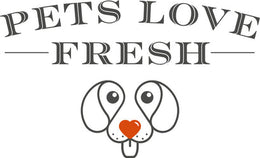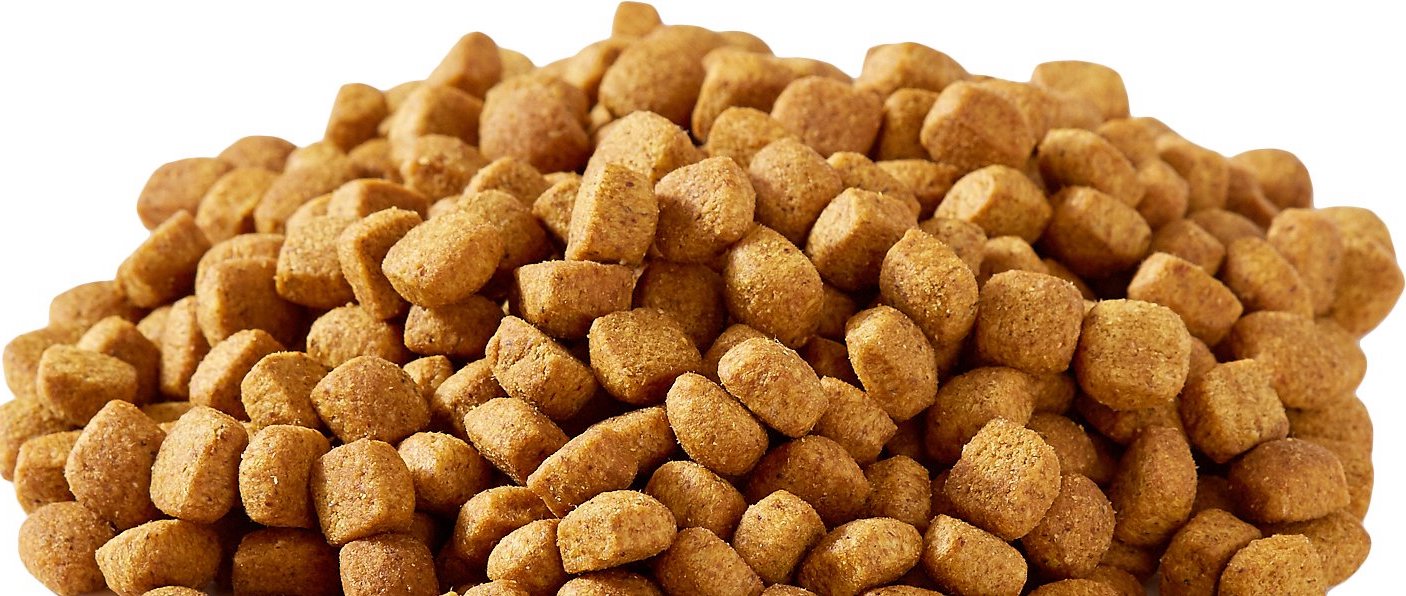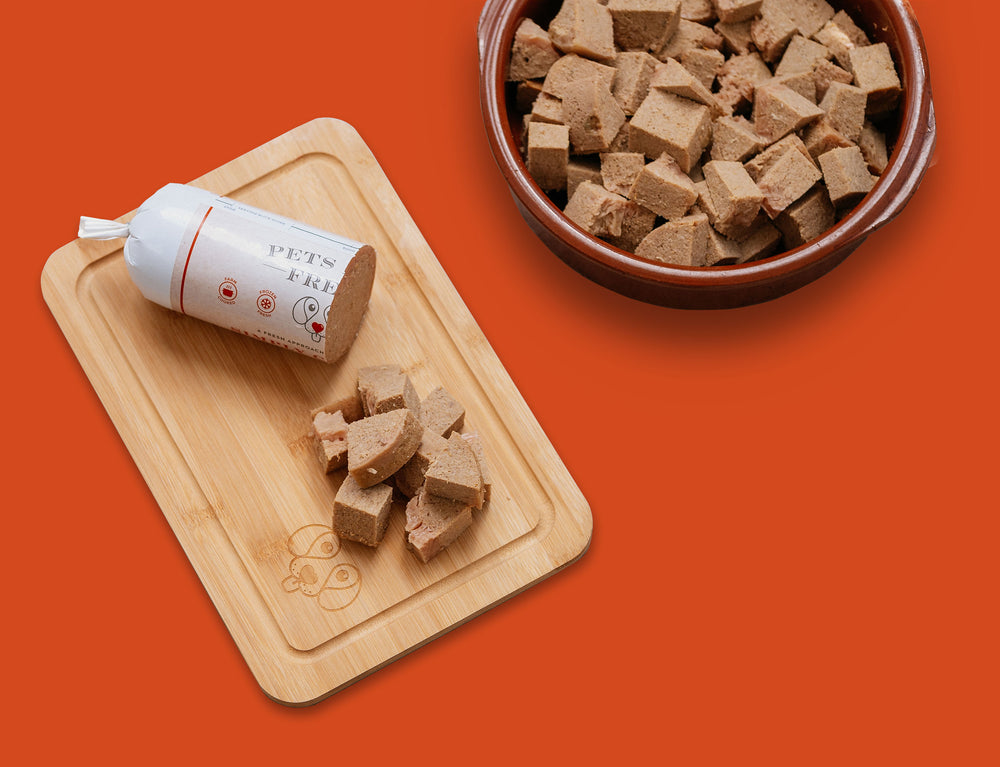What is Kibble for Dogs?
Kibble is dry dog food that is made from common ingredients such as animal protein, veggies, legumes and grains. Kibbles are little hard pellets otherwise known as bite sized pieces for dogs to eat.
It’s good for portion control, especially if owners have a bigger dog. This option is cheaper than other alternatives and can be bought in bulk. It’s not an ideal choice for every dog, especially those who are a bit fussier than others.
Why do Dog Owners Buy Kibble?
Our dog’s health is paramount, and one way to ensure that our dogs stay healthy is to keep them well fed. There are many brands out there, promising all the nutrient and calorific needs in easily storable, long lasting packages commonly referred to as kibble. These can be bought in bulk and brought out at mealtimes with minimal hassle.
Brands like Bakers, Pedigree and Royal Canin expound upon the wonderful benefits their ‘complete’, ‘vital’, and breed and age specific dog food provides. Packed full of vitamins and minerals, proteins and carbohydrates, these foods offer us a convenient solution to feeding our beloved pets in a quick and easy fashion, while also claiming to improve our dog’s health. What is more, our dogs enjoy eating them, what could be better!

Commercial brands often cover their packaging with terms like 'complete nutrition'. This means little more than that they meet minimal theoretical health requirements for the average dog.
Convenience
However, it is apparent to most owners that some dogs will eat almost anything you put in front of them. While a diet consisting predominantly of kibble will allow your dog to live, it is clear that just because they eat it doesn’t mean it is the best for them.
Much in the same way humans are prone to eating junk or fast food, which will in essence provide us with a large amount of our energy requirements in a quick and convenient fashion, we can all agree that in order to lead a healthy lifestyle fresh food has to be included as well.
It’s the same with our dogs. A lot of the foods we buy from many of the big dog food brands act like the junk food we consume. Prepared on an industrial scale with poor quality ingredients, spray on nutrients and preservatives, they are simply there to provide us with a convenient and cheap way to feed our dogs.
What goes into kibble dog food?
Bold labels on packaging highlight the use of wholesome sounding ingredients, such as meat and cereals. However, the quality of these product is often questionable.
A common standard to which meat used in the pet food industry, in the UK, is held to is the 4-D standard. Under this rule, meat and by products derived from animals rejected by food inspectors for human consumption, because they were ‘dead, dying, disabled or diseased’, can be put in dog food.
Animal Based Protein
You may have heard people argue that, being descended from wolves, dogs can survive on the low nutrient parts of an animal. This is only the case for a short period of time, and prolonged periods of poor nutrients can lead to deficiencies in our dogs, just as they would in their wild relatives. A lot of dry dog foods provide a nutrient deficient diet, leading to the range of diet related ailments we see affecting them today.

Carbohydrates
Carbohydrates make up to 50% of some kibbles, typically from wheat and corn produced using pesticides. High sugar levels caused by excessive intake of carbohydrates can put stress on our dogs’ organs and GI tract. The harmful chemicals from pesticides can make their way into our dogs from these low-quality ingredients.
This is where the second major ingredient, the carbohydrates, comes in. These are predominantly wheat derivatives and feed corn. They serve to add high levels of carbohydrates to the kibble, giving dogs the energy they don’t receive from the poor-quality protein ingredients. However, the levels of carbohydrates are typically in too high quantities and in a form that is not easily digestible for dogs. The product of these excess sugars and difficult-to-digest ingredients are the higher levels of obesity and allergic reactions seen in our dogs today.
As a result, while the ingredients do fulfil many of the nutritional requirements of our dogs, it is often in a poor-quality form and in the wrong quantities.
How kibble is made?
Extrusion is used by many dog food manufacturers to make kibble. It is a process that was borrowed from the breakfast cereal industry and is used to make about 95% of the dry dog food we see on the shelves.

Figure 1 An example of an extruder, which makes the familiar kibble bits.
It involves cooking the ground and shredded raw ingredients at high pressure and temperature, forcing the ‘dough’ through a spiralled screw while being heated. The stuff that comes out (the extrudate) is then cut into the familiar kibble pieces and left to dry.
Is Kibble Bad for Dogs?
Kibble does have benefits for dogs but mainly the bad and outright the good.
We’ve alluded to some of the disadvantages of it above such as:
- High temperatures which can impact the nutritional value
- Less known brands use synthetic vitamins which are toxic
- Spoiled kibble during manufacturing stages can create bacteria
- Unpleasant taste and unappealing look may put off dogs
- Hydration issues with lack of moisture within the meals.
These are just a few of the concerns that we have with having kibble as a diet for your dog. This can lead to more conversions with your dog's health and wellbeing such as a lack of appetite which in turn leads to a reduction in their energy levels.
Can Puppies Eat Kibble?
There is less focus on Kibble when a puppy is young. The diet of a puppy around 1-2 weeks of their doggy life is to be fed their mothers milk as opposed to any other form of food. At week 3-4 weeks old, puppies begin the weaning process which involves the slow integration of solid foods.
At 6-8 weeks old, puppies start to develop teeth which is the ideal opportunity to introduce solid foods. Don’t worry too much if your puppy doesn’t take straightaway, every dog is different so remain patient. If the issue persists then consultat a veterinarian.
Use Fresh Dog Food to Put your Dog's Health First
Good quality food makes a difference, just as it does with our health. While convenient, the negative effects of dry dog food on our dogs’ health are slowly being revealed. As more and more of us use many of these big brands, incidence of heart conditions, diabetes and other ailments are on the rise.
A nationwide study on British kennel clubs showing nearly a third of our dogs are suffering from health conditions. Obesity now affects over a third of British dogs and issues such as heart disease and kidney issues are on the rise as a result of this. As a result, we may need to think more carefully about what we give our dogs if we want to ensure they live as healthy and long a life as possible!
Fresh Dog Food at Pets Love Fresh
At Pet’s love fresh, we encourage dogs to live a healthier and fuller life. Our selection of fresh dog food taster packs will ensure your pet gets the nutrition they need & deserve. Say goodbye to the processed alternatives like Kibble and embrace the natural and healthy ingredients that go into fresh food. Treat your dog to a diet they’ll truly love and make the switch to fresh now. Your loyal companion deserves nothing but the best. Learn more about our fresh food products for adult dogs & puppies here!


